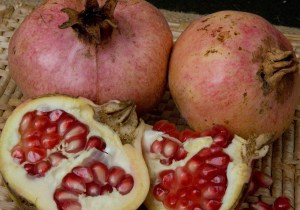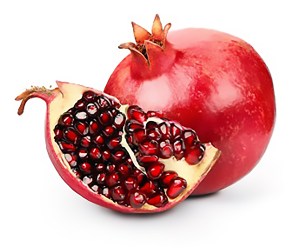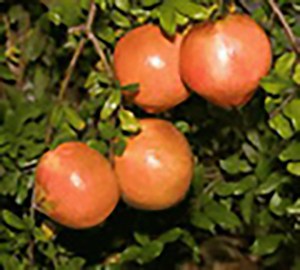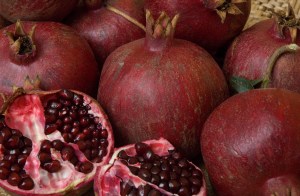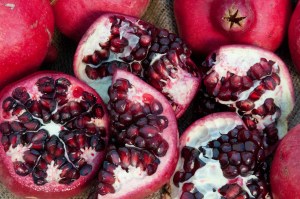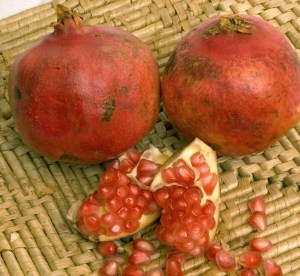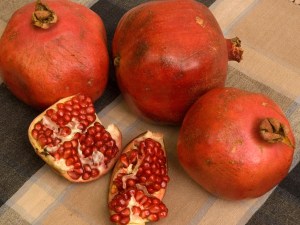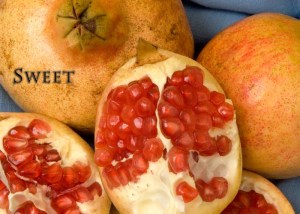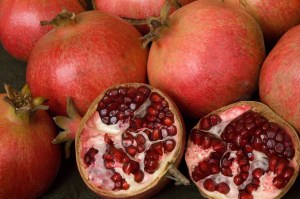Pomegranates
Bare Root Pomegranates
 Pomegranates are believed to have originated in Iran. They enjoy great popularity in the Middle East, South America and Mediterranean countries, including Spain and Italy. The name comes from the Latin meaning "apple of many seeds". Because of the profusion of seeds, ancient people connected it with rites of procreation and abundance. Pomegranates are finally finding a following in the U.S., primarily because of their health benefits. They contain large amounts of potassium, Vitamin C, calcium and iron. The fruit is a high source of fiber without cholesterol. Pomegranates contain antioxidants and have sugars that are safe for diabetics. The juice is proven to inhibit the body’s uptake of LDL (bad) cholesterol.
Pomegranates are believed to have originated in Iran. They enjoy great popularity in the Middle East, South America and Mediterranean countries, including Spain and Italy. The name comes from the Latin meaning "apple of many seeds". Because of the profusion of seeds, ancient people connected it with rites of procreation and abundance. Pomegranates are finally finding a following in the U.S., primarily because of their health benefits. They contain large amounts of potassium, Vitamin C, calcium and iron. The fruit is a high source of fiber without cholesterol. Pomegranates contain antioxidants and have sugars that are safe for diabetics. The juice is proven to inhibit the body’s uptake of LDL (bad) cholesterol.
There are many varieties grown in the world with Wonderful being the prominent variety for California growers, but we have many varieties from which to choose for your home orchard.
More About Pomegranates
Pomegranates can be grown successfully only in Zones 8 to 10 as they cannot tolerate extreme cold. They need lots of heat to ripen as well, so if your area is marginal regarding high summer temperatures, locate the plants against a west or south wall. The plants make good container subjects and can then be more easily protected from harsh winter weather in cold climates.
The flowers and fruits are very showy. When your bare root plant begins to leaf out in the spring, it’s important not to let it dry out, but as the plant becomes established, it will need less water. Pomegranates are quite drought resistant, but produce best with regular irrigation. Their natural growth pattern is shrub-like.
One pruning method consists of forming a single trunk. Prune out all inside branches lower than 2 feet for the first three or four years. Keep the plant open inside to allow the sunlight to penetrate. It is also possible to train the plant into a standard tree form. All the varieties are self-fruitful and are grown on their own roots.
Grenadine syrup, made from pomegranate juice and sugar, has long been used in mixed drinks, but its current commercial form no longer contains pomegranate juice! You can make your own rather easily by mashing together 2 cups of seeds and 2 cups of sugar, letting them sit for 12 to 24 hours. Bring the mixture to a boil, stirring constantly. Then simmer for about 2 minutes. You can add this liquid to drinks or fruit salads and sauces.
Pomegranate juice can be used to marinate lamb, pork or poultry. The seeds, which are surrounded by a fleshy pulp, are delicious added to salads, soups, poultry stuffing or scattered over a fruit compote. The fruit lasts for several months stored in the refrigerator or freezer.

